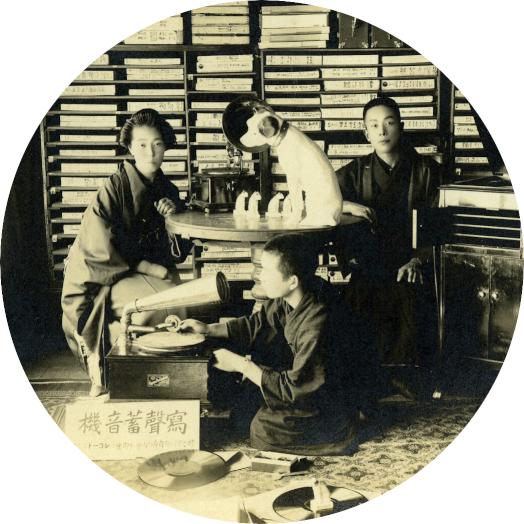Gramophone Concert “Jazz Summit (64) – A New Voice in Jazz”
2019.07.26
ACADEMIA
[Date] Friday, July 26 2019 18:00 (expected to end at 19:00)
[Venue] Intermediatheque 2F Lecture Theatre ACADEMIA
[Admission] Free
The number of seats is limited to 48. We request your comprehension.
[Organization] The University Museum, the University of Tokyo
[Cooperation] Hideki Umeda + Mac Sugisaki
[Program Conception] Intermediatheque Department, The University Museum, the University of Tokyo (UMUT)
A cycle of gramophone concerts is regularly held within the lecture theatre ACADEMIA of the Intermediatheque. This concert series focuses on the Satoshi Yuze record collection, from which we select famous 1920-1940s jazz recordings. We play them on the illustrious E.M.G. Mark IX and other gramophones, in order to share a quality of sound which has now vanished from public spaces.
Vocal jazz came to prominence as a subgenre in the late 1920s, in the same period as the emergence of solo playing. Recordings by black singers spread in the early years of that decade, but as jazz itself, they were then mainly crossovers from various styles such as blues, vaudeville, musicals and popular music. It was Louis Armstrong who firmly established singing as a central voice in jazz music. Here, with the stylistic development of Satchmo’s singing as our main thread, we will reconsider the birth of vocal jazz and its early evolution into pop music.
On the Cycle of Gramophone Concerts
“Gramophone”, “Phonograph”, “Graphophone”, “Zonophone”… After the invention and diffusion of a mechanical system capable of recording and playing back sound, it took several decades before the terminology designating this device took root. It is said that meanwhile, the perplexity of people discovering this enigmatic piece of furniture emitting wonderful sounds was beyond imagination, ranging from curiosity to fear. However, with the generalization of LPs, CDs and digital audio files, gramophones have fallen out of use, and those remaining in museums simply exist as exhibition items. This concert series aims at activating the gramophone again as a playback device, in order to appreciate its possibilities anew.
The University Museum, the University of Tokyo These gramophones will play a wide range of music, and various types of records. Among them, a most precious source of music is the Satoshi Yuze collection, donated to the University Museum in 2012. This private record collection, focusing on jazz music, contains ten thousand SP records. By playing on luxurious gramophones the collection constituted by Satoshi Yuze, which is the work of a lifetime, we will not only introduce rare recordings, but we will also share the quality and deepness of a sound lost with the advent of the digital era. In the iPod age, by getting together within the Intermediatheque lecture theatre and experiencing musical gatherings from another era, we intend to develop the museum space into a site for synaesthesia.

